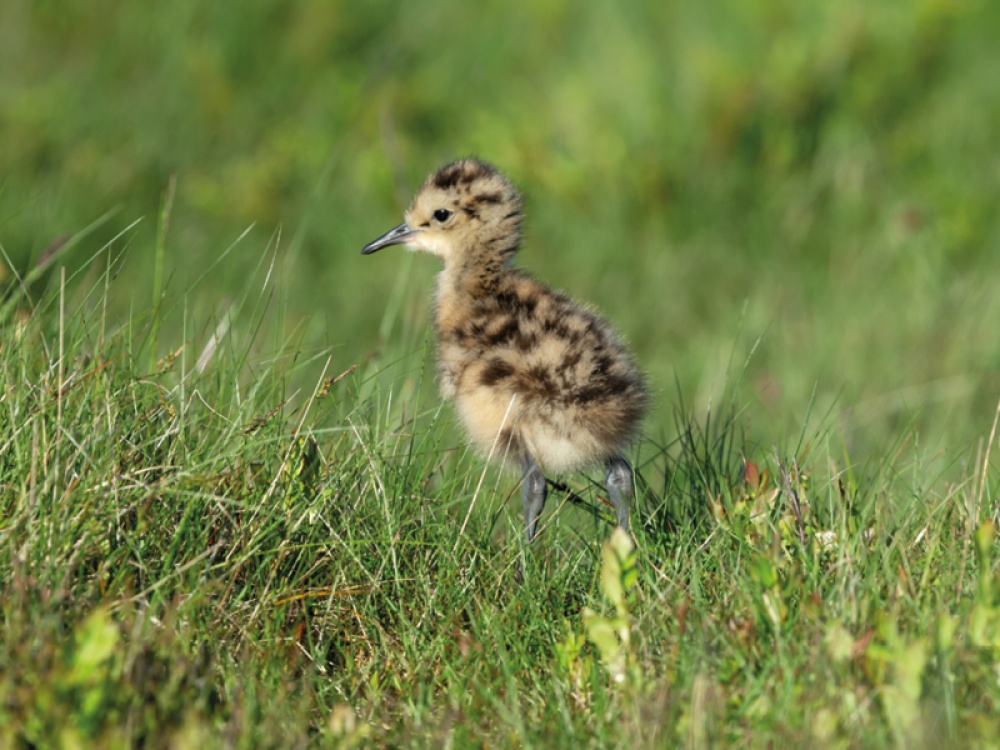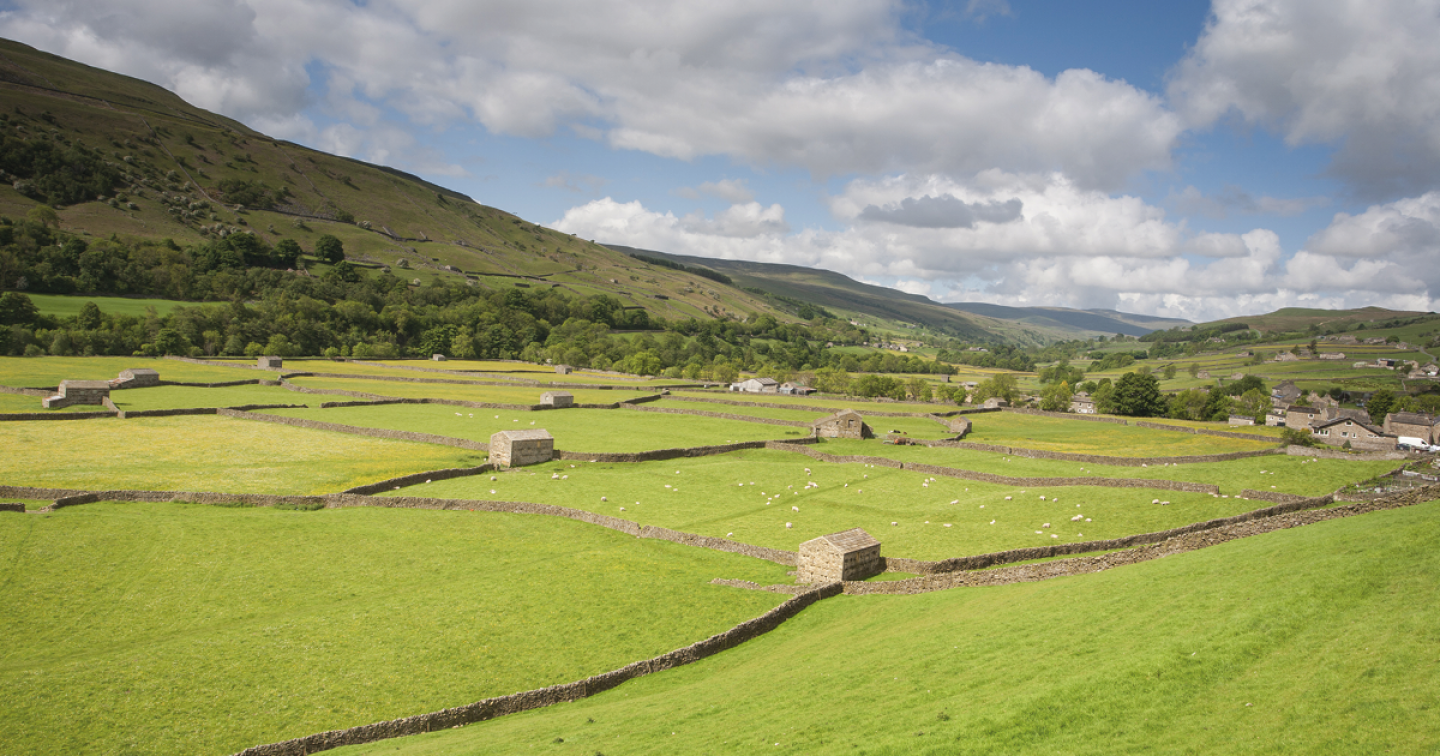How the Yorkshire Dales is Leading The Way to Save Endangered Curlews

The largest ever translocation of curlew eggs has begun

Ground-nesting birds are in severe decline in most parts of England. Five estates in Yorkshire (West Arkengarthdale, Bolton, Gunnerside, Grinton and Reeth) are taking part in a new project to help tackle that, and all five have healthy populations of breeding curlew. We spoke to Darren Chadwick, coordinator of the Yorkshire Dales Moorland Group, to find out more.
The number of curlew has fallen by about 60 percent in England and Scotland since the 1980s. ‘The curlew is a priority species of conservation concern in the UK at the moment,’ says Darren. ‘It’s a red-listed species and its decline has been so dramatic in the last 20 years that alarm bells have been ringing. In some places they’ve dwindled as much as 50 percent or more, and in some areas they’re even facing local extinction. The main cause of this has been an increase in predators and some changes in agriculture.
‘There are approximately less than 250 pairs of curlew south of Birmingham, where they were once quite common, and the numbers have been retracting at an alarming rate. On the managed moors here in the Yorkshire Dales we’ve got a really healthy, strong population, sufficient to supply young curlews to new sites. There’s been a lot of survey work that’s taken place before and during this project to monitor the populations to make sure the project doesn’t have any impact on our existing birds, and that’s ongoing. We do know that the birds will lay another clutch if the eggs are taken within a week or so [of being laid], so it really could be a win-win situation for curlew, which is the main priority.’
Read More: How to Have a Perfect Weekend in Hartlepool, Saltburn and Staithes
The relocation scheme launched last year, with 40 eggs collected from grouse moors and adjacent grassland, and that translocation was so successful that this year the number of eggs collected has tripled. ‘We got around 98 percent hatch rate, which exceeded Natural England’s target of 80 percent, and we went on to successfully rear and release in excess of 35 chicks,’ says Darren. ‘These chicks are mature at 50 days old, they can fly, and they’re fitted with GPS tags so we can monitor their progress as they disperse from their release point. They’re not sexually mature until they’re around two or three years old so we don’t expect to see any immediate results.’
This year three locations are receiving curlew: The Duke of Norfolk’s Peppering Estate in Sussex, Lord Cranborne’s Estate in Dorset and Mr Philip Merricks’ National Nature Reserve at Elmley in Kent. It’s hoped the birds will survive to adulthood and return in two years’ time to form new breeding colonies in these areas. ‘At the moment, in this second stage, the hatch rate has been around 96 percent, which is something that we’re very pleased about, and as we speak the chicks are in large open pens being reared for release at their sites,’ Darren adds.

The project is prioritising nests that are likely to fail (for example, if the nest is too close to a footpath or if predators are likely to eat the eggs). After a period of natural incubation, the eggs are incubated artificially and closely monitored before being moved south. Once they’ve arrived at their new home, the eggs are kept in temperature-controlled conditions and monitored daily by gamekeepers. Then the chicks are reared in special pens, safe from predators, until they are old enough to feed themselves and be released. ‘It’s a really great partnership,’ Darren continues. ‘It’s the gamekeepers who are doing all the rearing and releasing and there’s a largely scientific element to it which will help in starting to recolonise areas where curlew have been before but have dwindled away, as well as new areas where they haven’t been recorded before. We’re really optimistic that the whole project will be a success.’
Yorkshire is leading the way in protecting curlew, so where better to begin this pioneering project. ‘The fact we’ve got these really robust, sustainable populations of curlew is really testament to the land management methods that are currently employed – the farming practices and the way our moorlands are managed,’ he says. ‘It’s a real pat on the back for the way we manage our landscapes here. The other thing that’s worth mentioning is that the curlew, to sustain itself as a breeding bird, only needs to produce 0.7 of a chick per pair, per year, so they don’t even need to produce one thriving chick to survive, yet in the rest of the country they’ve not even been producing that and predation has accounted for around 98 percent of all losses. Here in the Dales, in contrast, we’ve got success rates of three chicks per pair.
Read More: Meet The Tawny Owl Chicks Born In Kielder Forest


The best way to protect the curlew going forward is to consider measures to reduce the predation element. They suffer a lot from foxes and crows whose population has expanded quite dramatically because of how we humans have been living. The downside is that they then go out and predate very vulnerable ground nesting birds. The gamekeeping practices on the moors involve legal predator controls to keep things in balance, which is why we’ve got a healthy population of the curlew.’
Darren says it’s been a privilege to be involved in the translocation project from the start. ’It’s really good that the gamekeepers are going to get the credit they deserve for their conservation work that largely goes unacknowledged,’ he adds. ‘They’ve driven this from start to finish and they’re largely responsible for its success. It has been a learning curve and there’s plenty the gamekeepers have had to learn, but the rearing has been an outstanding success. The main thing is that we’ve far exceeded the expectations of Natural England and naturally we’re really proud of our achievements. Ultimately, if we can get a self-sustaining population of curlew with their iconic calls and song established in the south, that would be a real credit to those involved, and something they can be rightly proud of for years and years to come. Fingers crossed!’
• The curlew is the largest European wading bird.
• Its iconic call was immortalised in the poem The Seafarer which dates back to 1,000 AD.
• The UK breeding population of curlew is of international importance.
• In 2015 curlew were added to the red list on the UK Conservation Status Report.
• Curlew are territorial and return to the same site year after year.







